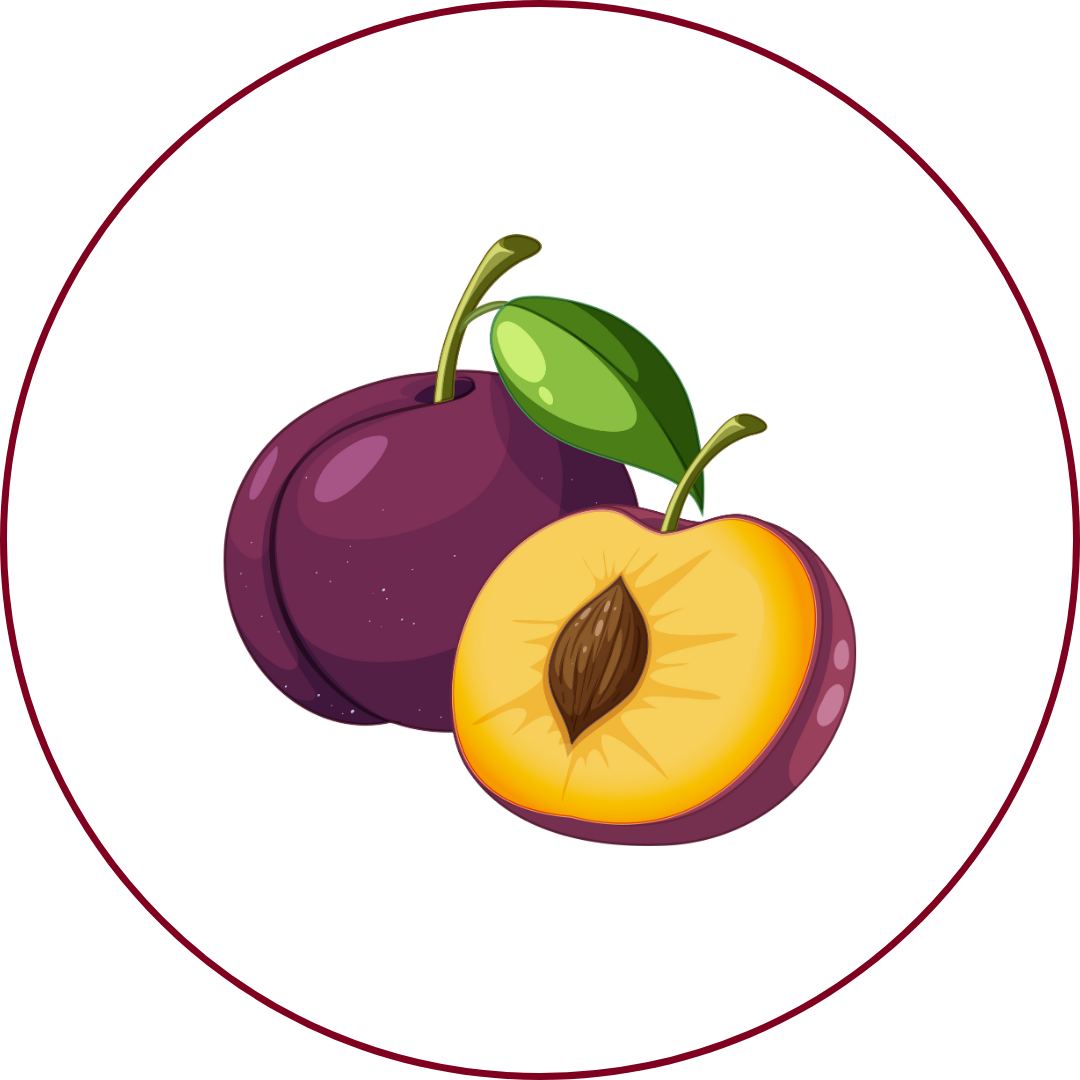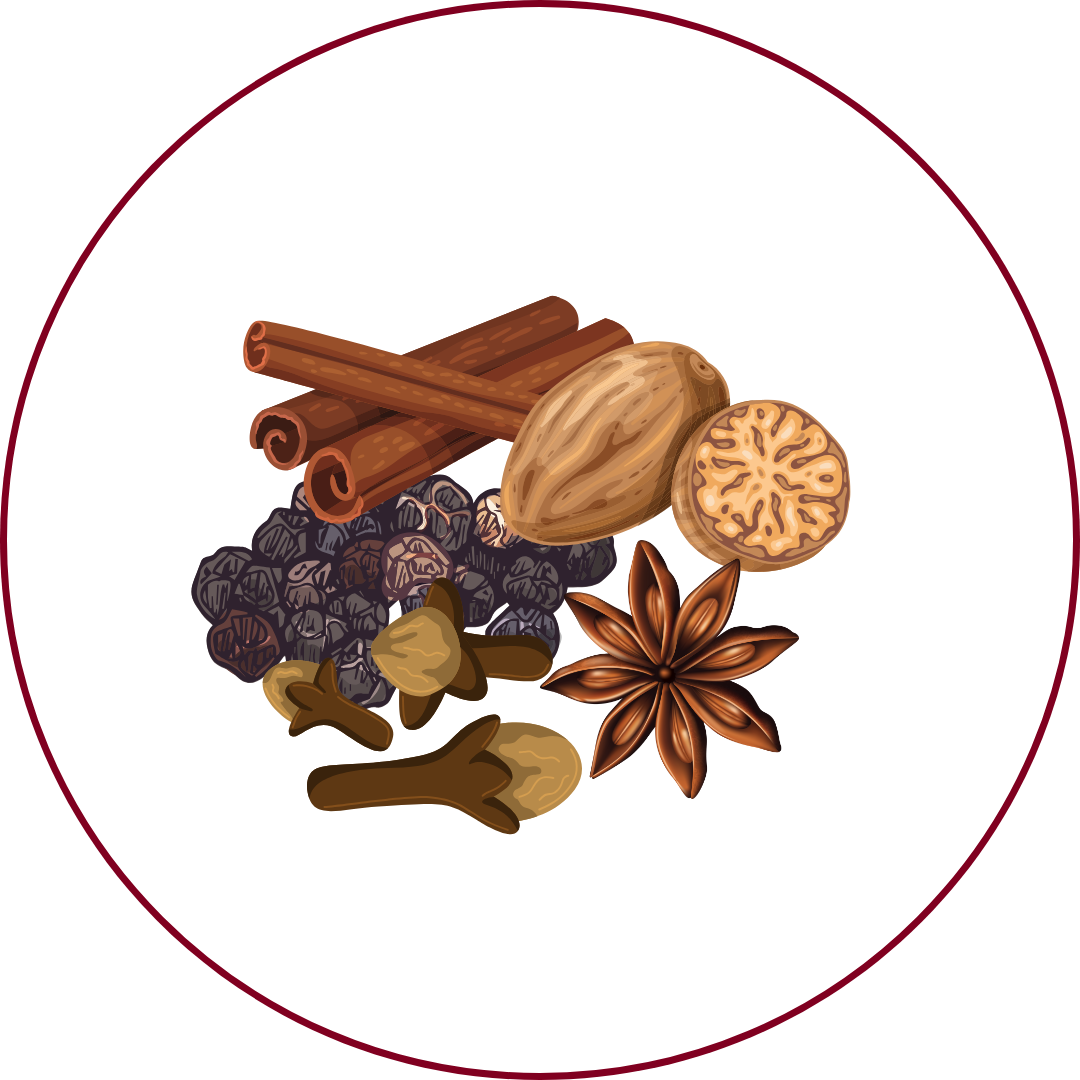Grape Variety
Frontenac
"fron-teh-NAK"
Wine Styles
 Sparkling
Sparkling Light White
Light White Full White
Full White Aromatic
Aromatic Rosé
Rosé Light Red
Light Red Medium Red
Medium Red Full Red
Full Red Dessert
DessertAbout Frontenac
Origin
University of Minnesota, United States
History
Frontenac is an interspecific hybrid grapevine developed by the University of Minnesota. It was created in 1978 by crossing the French hybrid Landot Noir with a selection of Vitis riparia, a native North American grape species known for its cold hardiness. Frontenac was officially released in 1996 and has since become a cornerstone for cold-climate viticulture, particularly in the Upper Midwest and northeastern United States, as well as in Canada.
Appearance
Small, bluish-black berries forming loose clusters, contributing to its resistance to certain fungal diseases.
Growing Traits
Frontenac is a vigorous and productive vine, known for its exceptional cold hardiness, surviving temperatures as low as -35°F (-37°C). It is highly resistant to downy mildew and moderately resistant to powdery mildew and botrytis. The grape exhibits high acidity and sugar levels, which can pose challenges in winemaking but also offer versatility in producing various wine styles.
Wine Characteristics
Body
4/5
Sweetness
2/5
Tannin
3/5
Acidity
5/5
Alcohol
3/5
Medium to full-bodied with a robust and fruit-forward profile, showcasing its rich dark fruit flavors and balanced structure. Typically dry, though semi-sweet and fortified versions exist, highlighting its versatility. Moderate tannin levels, providing structure and aging potential. High acidity, contributing to its freshness and suitability for various wine styles, including dry red, rosé, and fortified wines. Moderate alcohol content, typically ranging between 12% and 14%, ensuring balance and drinkability.
Taste Profile

Black Cherry

Plum

Blackberry

Spice

Chocolate
Frontenac wines are characterized by bold and concentrated flavors of black cherry, plum, and blackberry, complemented by spicy undertones and hints of chocolate. The high acidity provides a lively and refreshing finish, while moderate tannins offer structure, making it suitable for both early consumption and short-term aging.
Food Pairing
Frontenac's rich fruit flavors and balanced structure make it an excellent match for grilled meats, hearty stews, and aged cheeses. Its high acidity allows it to pair well with tomato-based dishes and barbecued fare. The wine's versatility also complements chocolate desserts, especially when crafted in a fortified, port-style version.
Growing Regions

United States
MinnesotaWisconsinIowaNew York

Canada
QuebecOntario
Notable Wines & Producers
Frontenac Reserve
Saint Croix Vineyards
Frontenac Rosé
Four Daughters Vineyard & Winery
Frontenac Port-Style
Carlos Creek Winery
Frontenac FAQ
Common questions about this grape variety
What is the origin of Frontenac?
+
University of Minnesota, United States
Is Frontenac wine full bodied?
+
Frontenac has a body level of 4 out of 5. Which means that Frontenac is Moderate to Full bodied.
Is Frontenac wine dry or sweet?
+
Frontenac has a dryness level of 2 out of 5. Which means that Frontenac is Semi-Dry.
Where is Frontenac wine from?
+
University of Minnesota, United States
Where is Frontenac grown?
+
Frontenac is grown in United States (Minnesota, Wisconsin, Iowa, New York)Canada (Quebec, Ontario).
What is Frontenac like?
+
Frontenac wines are characterized by bold and concentrated flavors of black cherry, plum, and blackberry, complemented by spicy undertones and hints of chocolate. The high acidity provides a lively and refreshing finish, while moderate tannins offer structure, making it suitable for both early consumption and short-term aging.
What does Frontenac pair with?
+
Frontenac's rich fruit flavors and balanced structure make it an excellent match for grilled meats, hearty stews, and aged cheeses. Its high acidity allows it to pair well with tomato-based dishes and barbecued fare. The wine's versatility also complements chocolate desserts, especially when crafted in a fortified, port-style version.
What does Frontenac taste like?
+
Frontenac wines are characterized by bold and concentrated flavors of black cherry, plum, and blackberry, complemented by spicy undertones and hints of chocolate. The high acidity provides a lively and refreshing finish, while moderate tannins offer structure, making it suitable for both early consumption and short-term aging.
Take Frontenac Knowledge with You
Access detailed grape profiles, tasting notes, and pairing suggestions on your iPhone.
Download on theApp Store